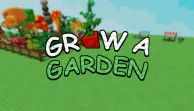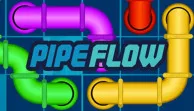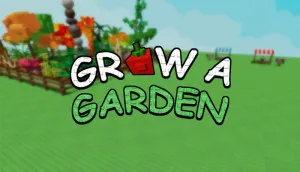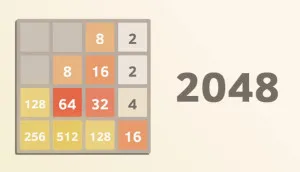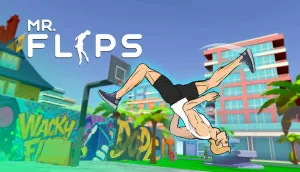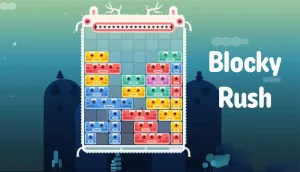
Brain Lines
Brain Lines is a creative drawing–meets–physics game where every stroke has purpose. Your task is simple to state yet deeply satisfying to master: draw lines, numbers, or shapes to complete a goal, from guiding a ball into a box to nudging magnets together. The fun comes from blending crisp Logic with hands-on drawing and real-world physics—gravity, friction, even magnetic force—into a calming, brain-teasing Puzzle loop that scales in difficulty the farther you go.
What Is Brain Lines Gameplay?
Brain Lines turns you into a “little artist” armed with problem-solving. Each level presents a self-contained physics scenario—balance a ball, push an object, touch a wall, reach the ceiling—and your sketch becomes the solution. There’s rarely a single correct answer, which keeps the experience fresh and rewards experimentation and smart Strategy.
Why It Stands Out
- Unique hybrid design: A clever mix of drawing gameplay and physical reasoning.
- Funny, intelligent challenges: Levels feel lighthearted yet genuinely brainy.
- Rising difficulty: The Challenge ramps smoothly as you unlock more stages.
- Friction & control. Long, slightly angled lines moderate speed. Short, sharp angles create bounces and risk losing control.
- Magnetism & contact. When magnets appear, your drawing should guide objects into contact surfaces without blocking the final approach.
- These bite-size physics ideas transform doodles into dependable solutions—pure, satisfying Logic.
Skills You’ll Build
- Spatial sense. Tiny angle differences matter; a five-degree shift can flip the result.
- Analytical timing. Faster objects at higher levels demand quick assessment and rerouting.
- Flexible creativity. Triangles for sturdy bases, arcs for smooth rolls, spring-like zigzags for bounce—there’s no single blueprint.
Mission & Objectives
- Primary task: Draw lines/numbers/shapes to meet the level’s request (e.g., “Place the ball in the orange box,” “Make the magnets touch,” “Touch the ceiling”).
- Your goals: Clear levels with the fewest strokes and fastest time.
Unlock new stages as difficulty increases and the reasoning becomes more multi-dimensional.
Controls Guide
Desktop: Hold left mouse button to draw; release to set your stroke.
Mobile/Touch (if available): Tap, drag, and release to draw the shape you need.
Hints: Tap the light-bulb icon on the right side of the screen whenever you’re stuck to see a suggested approach.
Practical Tips
- Start near 45° for smooth ramps. It’s a reliable angle for controlled speed when guiding rolling objects.
- Build with triangles. Triangular supports resist collapse and create stable platforms.
- Create springs for lift. Quick zigzag lines can add bounce when you need height.
- Prototype fast. Try multiple sketches; the game rewards iteration—the more you test, the faster you discover the right formula.
What Makes Brain Lines Different?
- Drawing + physics together: You’re not just tracing; you’re engineering solutions with gravity and push/pull dynamics.
- Open-ended solutions: Curves, ramps, triangles—solve your way. Brain Lines champions creativity alongside crisp Logic and stepwise Strategy.
Standout Features
Rich level library: 240+ levels spanning simple balance tasks to tricky magnetic puzzles. Examples include:
Place the balls in their boxes (around Level 100)
Make the magnets touch (Levels ~101–103)
Make the ball touch the right wall (Levels ~104–107)
Touch the ceiling / orange box (Levels ~108–110+)
Realistic physics: Objects fall, roll, and collide exactly how you’d expect, so smart drawings work consistently.
Built-in hints: The light-bulb offers gentle guidance without spoiling the fun.
Similar Games
If you enjoy Brain Lines, you might also like drawing and sketch-based puzzlers with creative mechanics: Quick Draw, Skribbl IO, and Draw Climber each offering a different flavor of hands-on Puzzle Challenge.
Player Impressions
Early stages (e.g., Levels 1–5) are approachable and teach the basics. From around Level 10, complexity rises noticeably. Community feedback highlights memorable tasks such as:
Level 30: “Place the ball in the orange box.”
Level 34 / 38: “Get the ball out of the container/vase.”
Level 42: “Place an object inside the orange box.”
Level 43: “Remove the orange ball from the box”—a standout difficulty spike that often demands several redesigns.
Don’t be surprised if a single session stretches long—later levels can easily occupy an hour or two as you experiment and iterate.
FAQs
Is there one correct answer per level?
No. Most stages support multiple solutions—great news for creative problem-solvers.
How do I improve quickly?
Work backward from the goal, test short strokes before committing to long ramps, and use hints sparingly to learn patterns.
What if the object moves too fast?
Lengthen your ramp or reduce the angle. Smoother gradients cut speed and improve accuracy.
Brain Lines blends sketching with physics to deliver a thoughtful Puzzle built on pure Logic, inventive Strategy, and a steady rise in Challenge. Grab your mouse, draw with intent, and watch your ideas turn into elegant, working solutions—one clever stroke at a time.




